There’s been more than a bit of jawing going on about the heat and humidity in these parts over the last few weeks. I’d like to point out that it is July. In Michigan. However, since I’ve been taking advantage of some time off to visit five Great Lake islands (more about these in future postings), I have had less to complain about. I’ve managed to miss out on a fair amount of July 2011 heat dome’s effects, thanks to . . . ahhh . . . island breezes. And Great Lake island breezes are some of the best.
Cheers! The same phenomenon that makes a number of Great Lake islands a fine temperate environment for vineyards–the lake functions as heat source or heat sink, depending on the season–makes them excellent places to escape summer’s heat. The Lakes allow their islands to simply cheat when it comes to extremes–with no excessive temperatures–proving to be not quite as cold in the winter, not quite as hot in the summer. You may have noticed that even while it’s been hot this month on the mainland, there’s often been a bit of a breeze. On an island, of course, that breeze caresses your skin only after it’s been cooled coming across the water. This is true even of a breeze on a city island like Belle Isle.
The morning was heating up quickly, so today’s Island Adventure was a picnic lunch on the southern shore of the eastern end of Belle Isle, a 982-acre island acquired by Detroit as a park in 1879, and a visit to the Livingstone Lighthouse there. I was hoping for a freighter to come by while we ate our sandwiches and, stalling, passed the time, perusing Island in the City: How Belle Isle Changed Detroit Forever compiled by Janet Anderson in conjunction with a 2001 exhibit at the Detroit Historical Museum and published by the Friends of Belle Isle.
What I was reading about:
- The first Belle Isle bridge, a swing bridge with a wood floor suspension that allowed vessels to navigate between the north side of the island and Detroit
- The 1915 fire that was started by an ember from a hot coal truck and destroyed the first Belle Isle bridge (image from a postcard of the Belle Isle Bridge Fire April 27, 1915):
- The burned bridge’s replacement, the half-mile MacArthur Bridge with its nineteen arches (image from cvent Destination Guide website “Images of Detroit, Michigan”):
When I wasn’t reading, I was looking south across the Detroit River to the well-appointed Canadian homes along the shoreline. Yes, in Detroit, we can go south and find ourselves in Canada!
Consider the view looking west from Sunset Point below. Detroit, top-heavy with its 70-story Renaissance Center, is on the right, the north side of the Detroit river, which connects Lake Erie and Lake St. Clair, the latter which is often referred to as the “sixth Great Lake”. (By the way, do you know how to remember the names of the five Great Lakes? “HOMES” — Huron, Ontario, Michigan, Erie, Superior, and all providing homes to much wildlife). Canada, is on the left, the south side of the river. Notice the Ambassador Bridge spanning the river in the distance, connecting the U.S. and Canada:
Pelee Island is the southern-most piece of Canada, except for Middle Island, an island which had been privately owned by a series of U.S. citizens until 1999, when it was purchased by the Nature Conservancy of Canada and then donated to the Canadian park system (it is now a part of Point Pelee National Park):
Middle Island is a conservation area, primarily inhabited by a cormorant population, the management of which has resulted in some conflict.
Today I saw a cormorant on Belle Isle for the first time, and while I’ve seen a thousands of cormorants on Lake Erie over the years, this was the first cormorant I’ve ever seen perched in a tree. I was doubtful, but my daughter Meagan, a marine biologist working on her PhD in Marine Conservation at Duke, who more typically works with sharks (you can see her at work last week on the Neuse River in a photo picked up by the DEGS Fishing Report; click here and search for the July 25, 2011 blog “Neuse River Bull Sharks”), has had many dealings with cormorants, including being first author on a paper published in The Open Ecology Journal last year: “Cormorant Diving Behavior Under the Risk of Predation,” confirmed the identification of this perching waterfowl:
I’d say that this cormorant has got it all figured out: Perching in a Great Lakes Basin treetop results in low predation risk . . .at least from sharks.
At any rate, no freighter passed by the time the sandwiches had been consumed, but I did spot a Blue Heron among the gulls at the Lagoon at Sunset Point by the Scott Fountain during the course of the afternoon, which, to my mind, was even better:
Here’s the Scott Fountain, alluded to above:
Notice that the Fountain is not working.
My friend, Barbara, explains by e-mail, “On September 16, 2010, in an effort to repair the leaking Scott Fountain, the beautiful Pewabic Tiles that once adorned the rim of the fountain for 85 years were damaged during the process of re-cementing the basin. The Friends of Belle Isle together with Pewabic Pottery are working with the City of Detroit, Departments of Recreation and General Services to replicate these beautiful tiles originally created and designed by Mary Chase Perry Stratton. Efforts are estimated at about $150,000. Roberta Henrion, FOBI President, stated that she would like to see this happen in as short of time as possible and is firing up efforts to raise the necessary funding.
NOTE: Should you like to make a donation toward this effort, you can either send a check payable to the Friends of Belle Isle with a memo for the Preservation Fund – Scott Fountain Project and address it to FOBI, 8109 E. Jefferson Ave., Detroit, MI 48214, or you can get more information and contribute online at CrowdRise (motto: “If you don’t give back, no one will like you.” Ha, if only things were that simple.):
Here’s how the Scott Fountain looks when it’s working (and it’s captured by a photographer who possesses one of those filters that makes the clouds look dramatic):
We’ll save the story about Scott, the man the fountain is named after, for another day and make our way to the Lighthouse now:
The way to the Lighthouse was much wilder than I remember from the past and most pleasant:
Chicory (a.k.a.”Dusty Soldiers”), Sweet Purple Clover, and white Wild Morning Glory are scattered throughout the tall golden grass, which has gone to seed. Dragonflies hover over and flit across the path, which is spotted with puddles from rain the night before that had not graced the mainland. Cicadas saw and chirp in the tops of Poplar trees. The sun is hot, but that breeze comes ever so cool across the river. Enough of a breeze to make the Poplars glitter. And in their midst is the lighthouse.
Have you ever visited the Livingstone Memorial Lighthouse?
If you have been there, you may know some of the things that make this lighthouse special:
- It is situated at the head of the Detroit River, facing Lake St. Clair, and its light (11,500 candlepower) can be seen 15 miles away
- It is a 58-foot shaft of Georgia marble (look at the exquisite green and purple coloration above), and it is the only lighthouse in the country built entirely of marble
- It measures a total of 80 feet high with the bronze lantern room that houses the light:
- The renowned Detroit architect, Albert Kahn, designed the Lighthouse and it was first operated for the 1930 navigation season; it’s been lit for over 80 years
- It is named after William Livingstone, a prominent and popular Detroit resident who was president of the Lake Carriers’ Association, the trade association representing U.S.-Flag vessel operators on the Great Lakes, from 1902 – 1925:
On our way back from the Lighthouse, we came across another, more subtle memorial:
A Red Maple was planted alongside the path, and had at one time, apparently, been enclosed by a square of split rail fence, two sides of which were still standing. Beneath the tree, we found a marble slab in the grass:
Despite the Internet search engine wonders of the Internet, I’m sorry to report, I have no story to share about Dean Osgood. I do imagine, however, that he, too, surely appreciated the island breezes while he ran Belle Isle.
By the way, you, too, can be a Friend of Belle Isle; click here to check out an inexpensive way to keep this place of beautiful breezes viable for future generations.


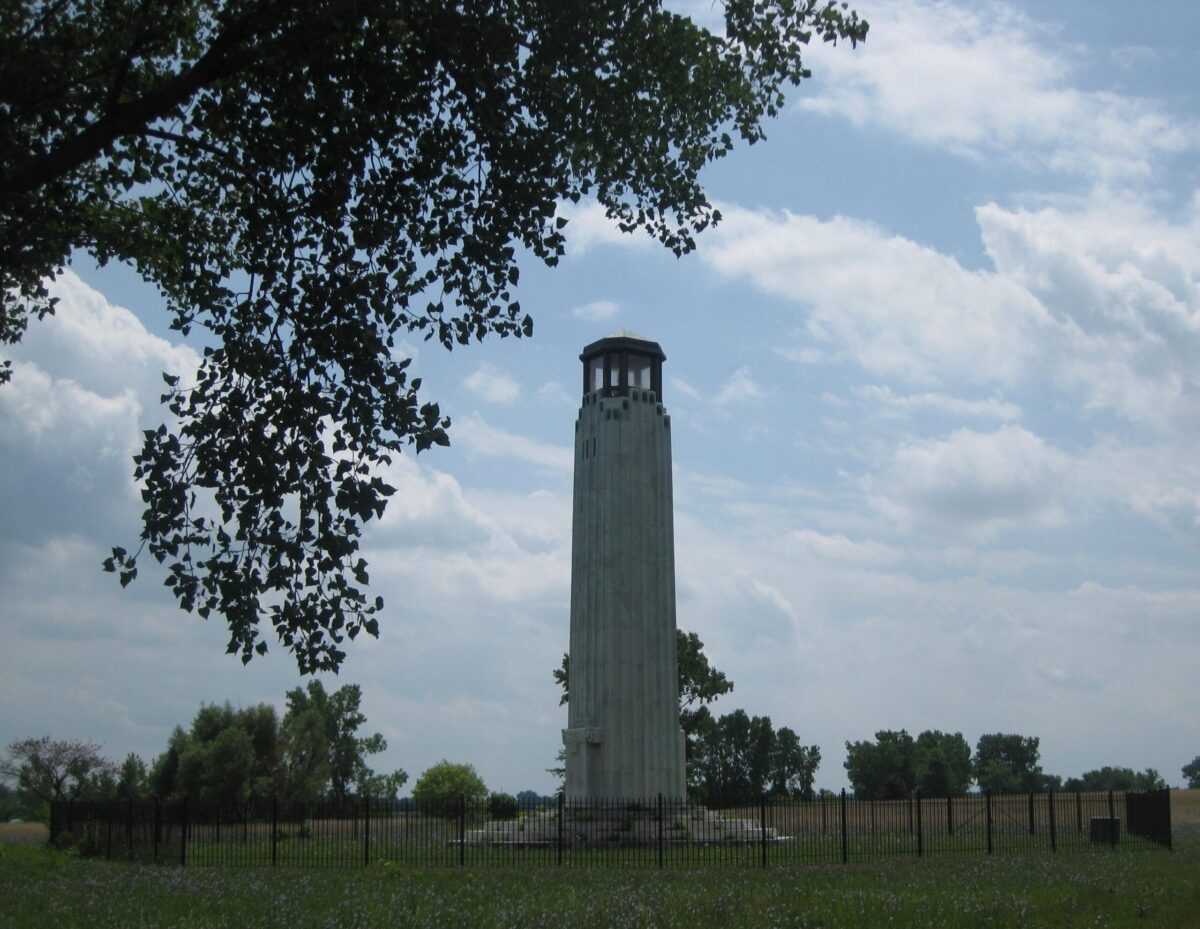


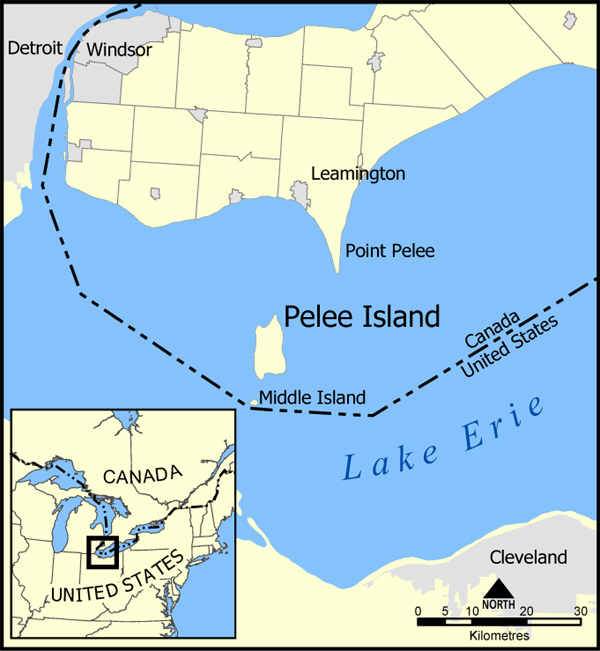





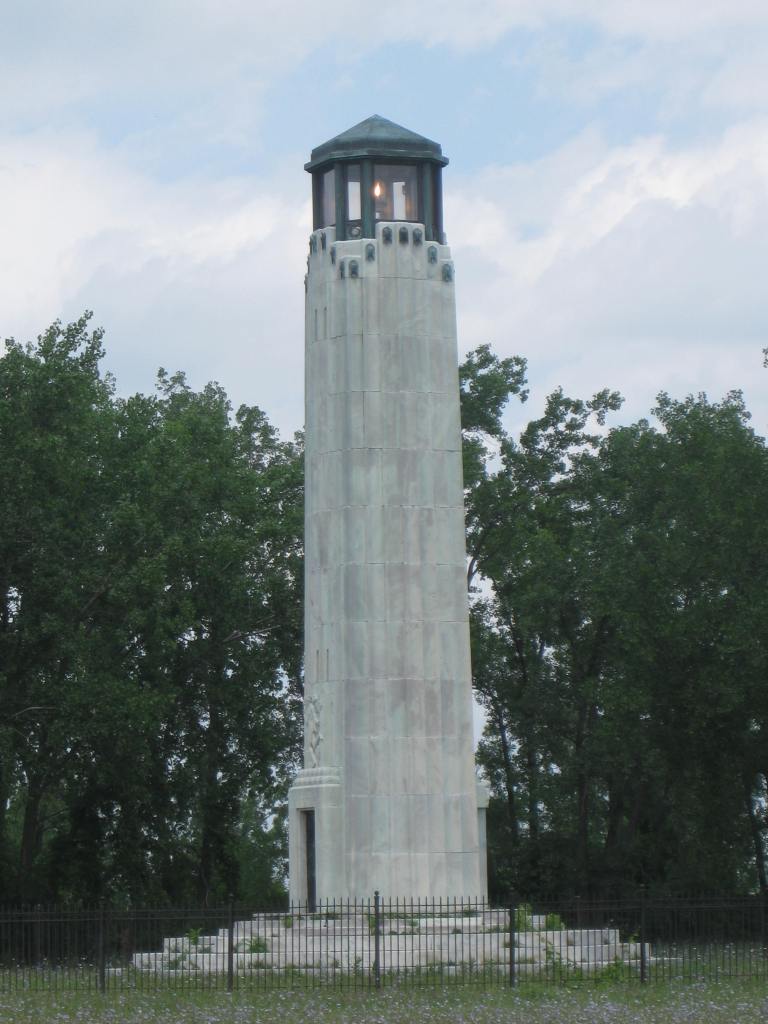
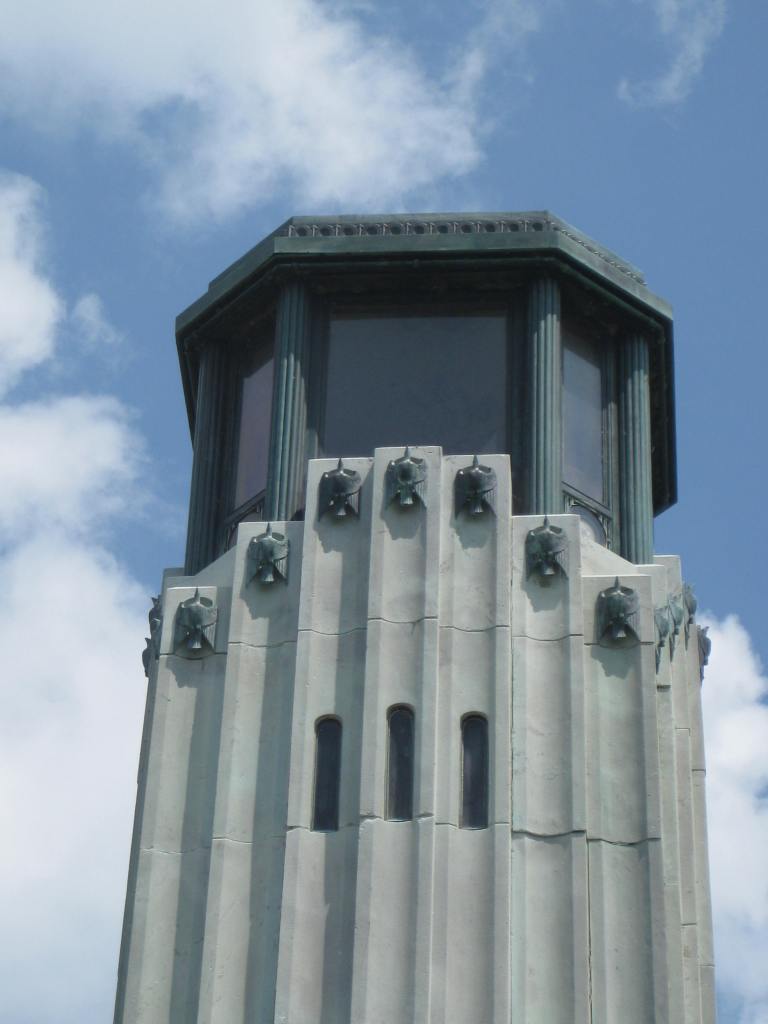



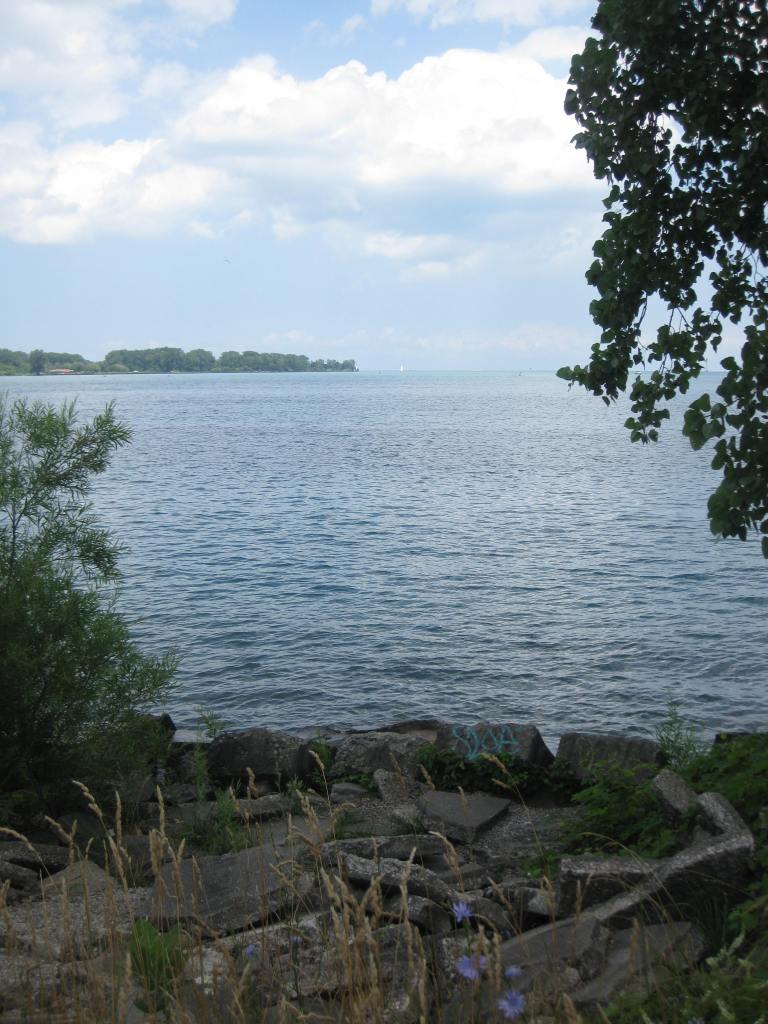

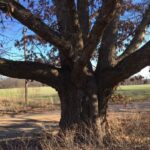




Another fascinating blog. The pictures surely do add a lot to the plot! Thanks for giving us the opportunity to travel with you to such great places. Dad
Thought you might have some stories about this particular great place, too, Dad!